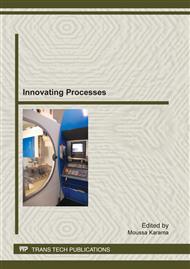p.1
p.12
p.26
p.31
p.53
p.65
p.77
p.89
Numerical Model to Simulate the Drop Test of Printed Circuit Board (PCB)
Abstract:
Increasing demand for smaller consumer electronic devices with multi-function capabilities has driven the packaging architectures trends for the finer-pitch interconnects, thus increasing chances of their failures. A simulation of the Board Level Drop-Test according to JEDEC (Joint Electron Device Council) is performed to evaluate the solder joint reliability under drop impact test. After good insights to the physics of the problem, the results of the numerical analysis on a simple Euler-Bernoulli beam were validated against analytical analysis. Since the simulation has to be performed on ANSYS Mechanical which is an implicit software, two methods were proposed, the acceleration-input and the displacement-input. The results are the same for both methods. Therefore, the simulation is carried on the real standard model construction of the board package level2. Then a new improved model is proposed to satisfy shape regular element and accuracy. All the models are validated to show excellent first level correlation on the dynamic responses of Printed Circuit Board, and second level correlation on solder joint stress. Then a static model useful for quick design analysis and optimization’s works is proposed and validated. Finally, plasticity behavior is introduced on the solder ball and a non-linear analysis is performed.
Info:
Periodical:
Pages:
26-30
Citation:
Online since:
December 2011
Authors:
Keywords:
Price:
Сopyright:
© 2012 Trans Tech Publications Ltd. All Rights Reserved
Share:
Citation:


